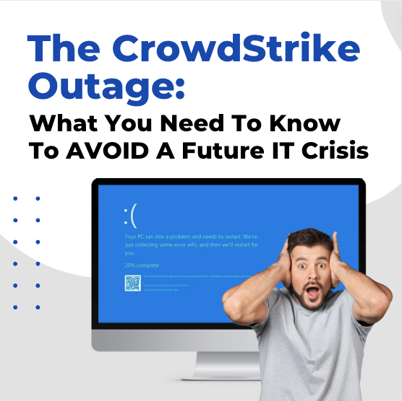Phishing attacks are the most common type of cybercrime for one simple reason—they work. Every day, over 3.4 billion spam emails flood inboxes around the world, with phishing attempts leading the charge. These attacks have been the most frequent form of cyber attack for years because they’re easy to execute, easy to scale, and still fool countless people. Now, with AI tools like ChatGPT, it’s even easier for cybercriminals to craft emails that look and sound more convincing, making it harder to spot a phishing attempt.
Phishing scams can have devastating effects on your business if you’re not careful. That’s why, in honor of Cybersecurity Awareness Month, we’ve created this guide to help you and your team identify phishing emails and understand the critical importance of stopping them.
The Dangers of Phishing Attacks
Phishing emails aren’t just an annoyance—they pose a real and significant threat. Here are four major risks of falling victim to these attacks:
Data Breaches
Phishing attacks can expose your company’s sensitive information to hackers. Once accessed, this data can be sold on the dark web or held for ransom. Even if you pay, there’s no guarantee the criminals will return it. This can lead to legal issues, financial loss, reputational damage, and a loss of trust from your customers.
Financial Loss
Cybercriminals often use phishing emails to steal money directly, whether by tricking businesses into paying fraudulent invoices or authorizing fake transactions. The financial impact can be severe and long-lasting.
Malware Infections
Phishing emails frequently contain malicious links or attachments. Clicking these can lead to malware infections, which can disrupt your operations, result in data loss, and require costly cleanup.
Compromised Accounts
If an employee falls for a phishing scam, their account could be compromised. This gives hackers a foothold inside your business, allowing them to launch further attacks or access confidential company data.
These dangers are just the tip of the iceberg. Fortunately, there are effective steps you can take to defend against phishing attacks.
Introducing the S.E.C.U.R.E. Method to Identify Phishing Emails
To help you and your employees spot phishing emails before they cause harm, follow the S.E.C.U.R.E. Method:
S – Start With the Subject Line
Is it strange or off? Look for odd patterns like “FWD: FWD: FWD: review immediately” or anything that seems unusual.
E – Examine the Email Address
Do you know the sender? Is the email address misspelled or unfamiliar? Be cautious if the sender’s address is slightly altered from a legitimate one.
C – Consider the Greeting
Is the greeting generic or unusual? Phishing emails often use impersonal greetings like “Hello Ma’am!” or “Dear Customer” rather than addressing you by name.
U – Unpack the Message
Does the email create a sense of urgency, encouraging you to click a link or download an attachment? Be wary of anything that seems too good to be true or pressures you to act fast.
R – Review for Errors
Are there grammatical mistakes or odd spellings? Phishing emails often contain errors that wouldn’t be present in legitimate business communications.
E – Evaluate Links and Attachments
Always hover over links to check their destination before clicking. Avoid opening attachments from unknown senders or those you weren’t expecting.
Protect Your Business From Phishing Attacks
Even with the S.E.C.U.R.E. Method in place, it’s essential to have a cybersecurity expert monitoring your network and blocking spam emails before they reach your team. Phishing attacks are frequent and effective, but with the right precautions, you can stay one step ahead of cybercriminals.
If you need assistance training your employees on cybersecurity best practices, implementing a strong security system, or simply want an expert to assess your current setup for vulnerabilities, we’re here to help. Give us a call at 214-550-0550 or click here to schedule a consultation with our team.
Don’t wait until it’s too late—protect your business from phishing scams today!










